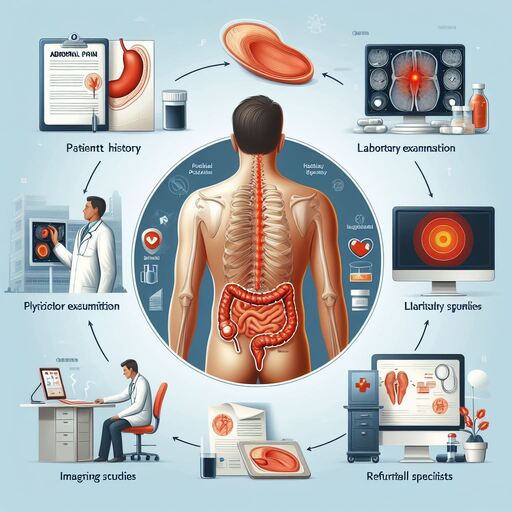How Is Abdominal Pain Diagnosed?
How Is Abdominal Pain Diagnosed?
Abdominal pain can be caused by a variety of conditions, including digestive issues, infections, injuries, and illnesses. The diagnosis of abdominal pain is typically made based on a combination of medical history, physical examination, imaging tests, and laboratory tests. Here’s how abdominal pain is diagnosed:
1. Medical History: Your healthcare provider will ask about your symptoms, including the duration, location, severity, and any underlying medical conditions that you may have. They may also ask about your dietary habits, medication use, and any family history of digestive disorders.
2. Physical Examination: Your healthcare provider will perform a physical examination to assess your abdominal area. This may include palpating (touching) the abdomen to feel for any tenderness, lumps, or other signs of inflammation or infection. They may also listen for any unusual sounds or rhythms in the abdomen.
3. Imaging Tests: Depending on your symptoms and medical history, your healthcare provider may recommend imaging tests such as X-rays, ultrasound, CT scan, MRI, or endoscopy to get a better understanding of the cause of your abdominal pain. These tests can help identify any structural abnormalities or inflammation in the digestive system or other organs that may be causing your symptoms.
4. Laboratory Tests: In some cases, laboratory tests such as blood tests or stool tests may be necessary to diagnose the cause of your abdominal pain. For example, a blood test can detect any signs of infection or inflammation in the digestive system, while a stool test can check for any abnormalities such as parasites or bacterial overgrowth that may be causing your symptoms.
5. Additional Testing: Depending on your symptoms and medical history, your healthcare provider may recommend additional testing such as an upper GI series (esophagram) to evaluate the esophagus, stomach, and duodenum or a lower GI series (barium swallow) to evaluate the small intestine, colon, and rectum.
6. Diagnostic Procedures: In some cases, your healthcare provider may need to perform additional diagnostic procedures such as an abdominal ultrasound, laparoscopy, or exploratory surgery to determine the cause of your abdominal pain.
How Is Abdominal Pain Diagnosed?
It’s important to note that abdominal pain can be a symptom of many different conditions, so a proper diagnosis is critical to receive appropriate treatment. Your healthcare provider will work with you to develop a comprehensive plan for managing your symptoms and addressing any underlying medical conditions that may be causing your abdominal pain.
How Is Abdominal Pain Diagnosed?

